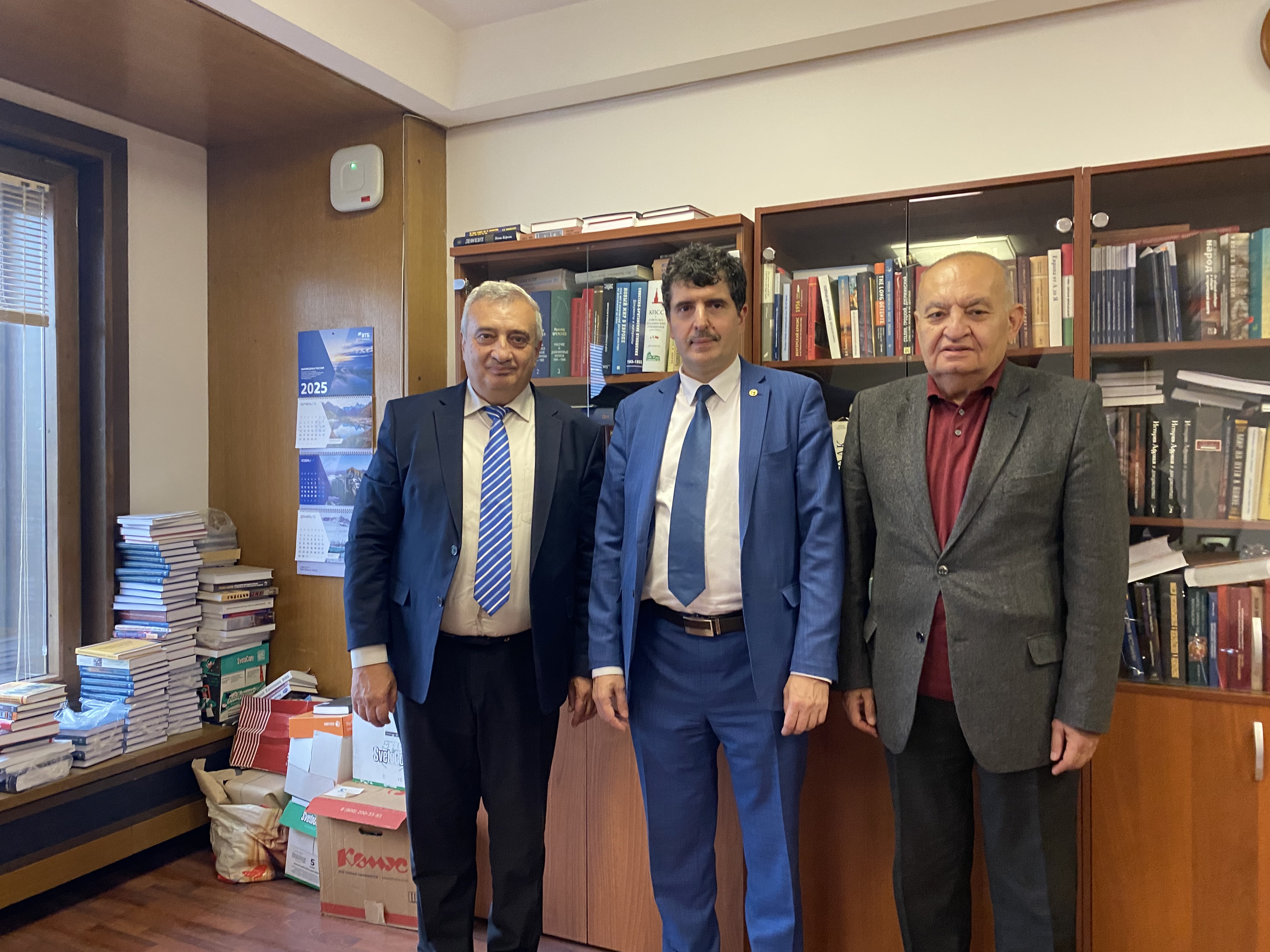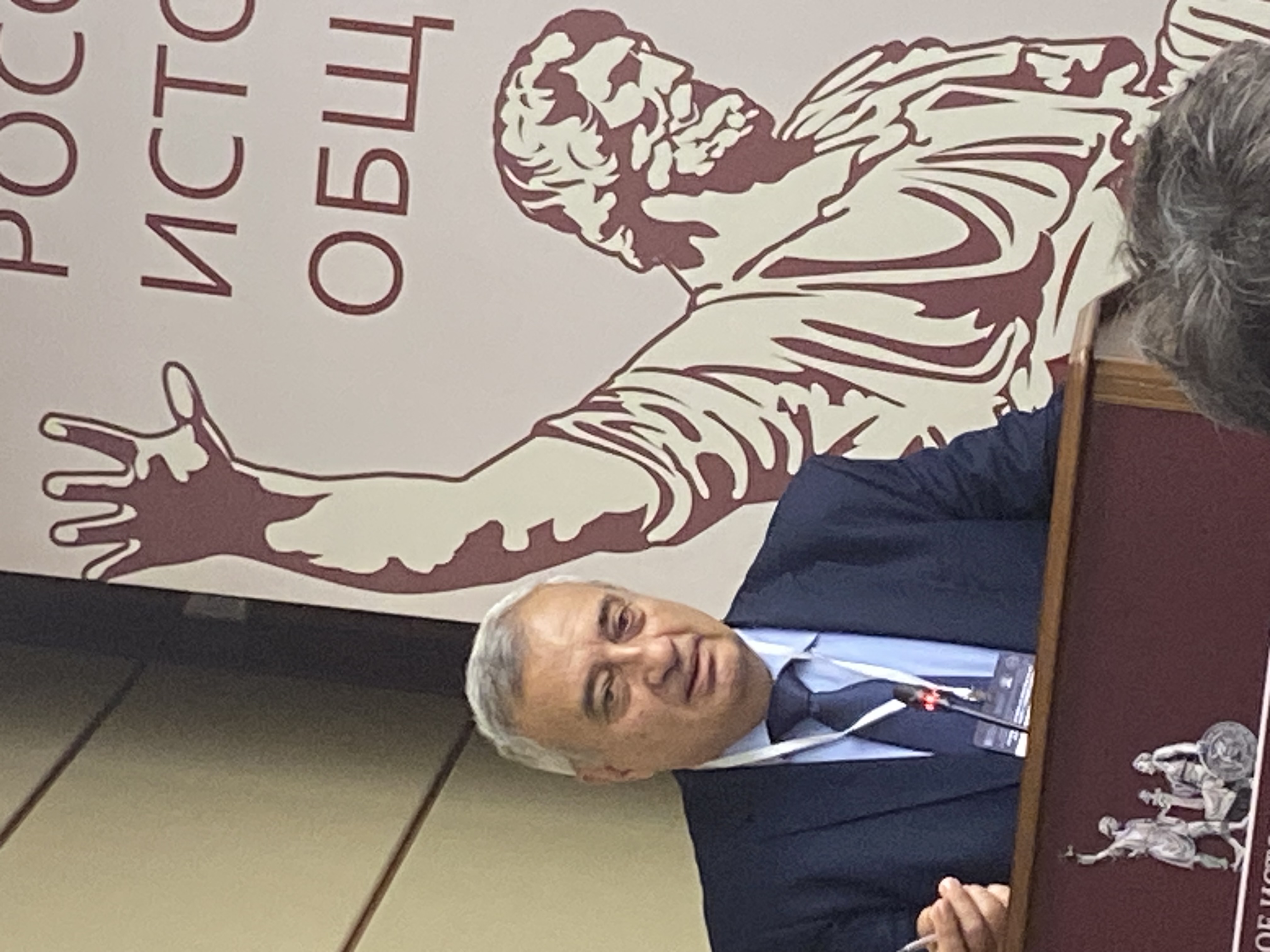On 5–6 November, the Director of the NAS RA Institute of History, Academician Ashot Melkonyan, and Senior Researcher Ruben Azizbekyan participated in an international conference in Moscow entitled “Historical Memory in the CIS Area: Formation and Development Trends”, jointly organised by the Institute of World History of the Russian Academy of Sciences, the Russian Historical Society, the Russian Peace Foundation, the Interstate Fund for Humanitarian Cooperation of the CIS Member States, and the International Association (Commission) of Historians and Archivists of the CIS Member States.


The conference was attended by representatives from eight CIS member states, including the Russian Federation, Belarus, Azerbaijan, and all the countries of Central Asia. Notably, the majority of participants were directors and deputy directors of academic institutes.
On the first day, the participants were welcomed by Mikhail Shvydkoy, Special Representative of the President of the Russian Federation for International Cultural Cooperation; Academician A. Chubaryan, Scientific Director of the Institute of World History of the Russian Academy of Sciences, President of the International Association (Commission) of Historians and Archivists of the CIS Member States, and Co-Chairman of the Russian Historical Society; Mikhail Lipkin, Director of the Institute of World History of the Russian Academy of Sciences and Corresponding Member of the Russian Academy of Sciences; and others.
Immediately after the opening of the conference, a presentation of the collective monograph “The Peoples of the Soviet Union and the Great Victory: 1941–1945” was held, authored by historians of the post-Soviet space, including scholars from the NAS RA Institute of History.
Ashot Melkonyan delivered a report entitled “Armenia in the Russian Empire and the Soviet Union: A Shared Past”, which received particularly high appraisal from the Russian side.
Overall, the conference was quite intensive both in its scholarly content and in its practical aspects. It offered the opportunity for direct communication with CIS colleagues and for the discussion of trends in the development of key issues in post-Soviet historiography.
On a practical level, almost all participants agreed on the necessity of establishing and strengthening academic ties. In this context, it was particularly noteworthy that, within the framework of the conference, Mikhail Lipkin, Director of the Institute of World History of the Russian Academy of Sciences, received his Armenian colleagues. During a warm and constructive exchange, both sides reached an agreement to re-sign, in the spring of 2026 in Yerevan, the existing cooperation agreement between the NAS RA Institute of History and the Institute of World History of the Russian Academy of Sciences.
Finally, we consider it important to note the high level of organisational work carried out by the host side. In particular, the inclusion of a cultural programme provided great aesthetic pleasure, giving the conference participants the opportunity to enjoy a highly impressive performance of “Swan Lake” at the State Kremlin Palace, presented by the Ballet Company of the Bolshoi Theatre.




